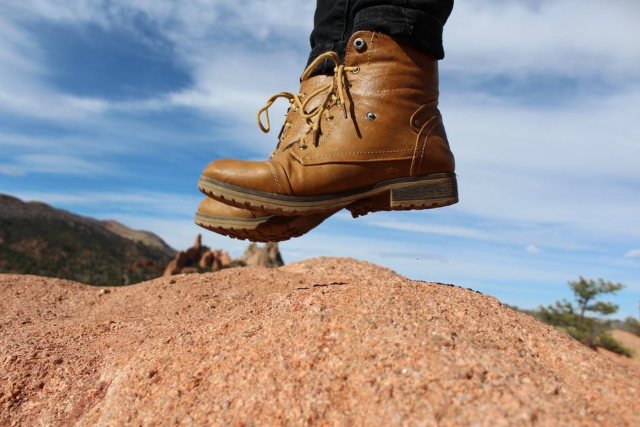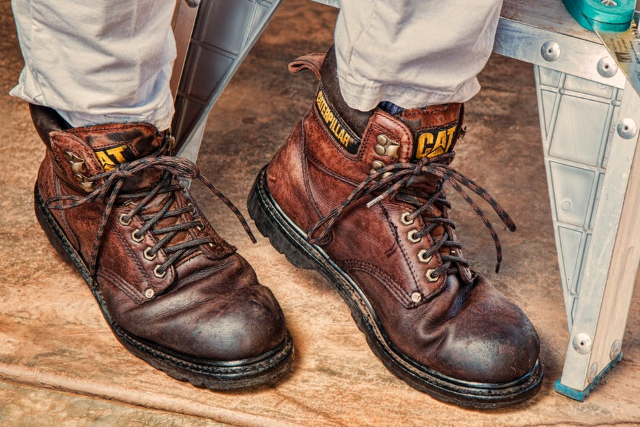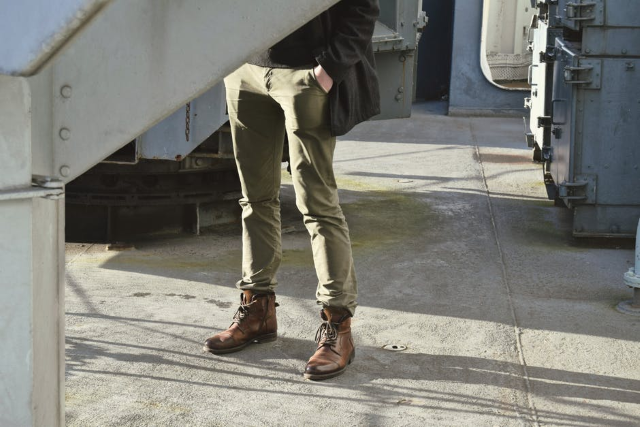[toc wrapping=”right”]
Creating a foundation for the worker’s safety always starts from the ground up, and among the best foundation have the necessary support from the best work boots.
There are a lot of workers that don’t understand the importance of wearing proper safety footwear while working.
For the same reason, they stick to class B construction work boots.
It is important that companies should also consider that work boots are essential tools that will help combat any workplace hazard, fatigue, and discomfort.
It is important to know the reason for finding the best work boots that match the needs to the job.
Here are some ways that will help workers who are in the search for the best work boots.
Durability
The one thing that will make boots last longer is durability. If you’ve got boots that last a long time, then that’s a great way to know you’ve spent your money in the right way. Durability is one of the most important things that will get you the most bang for your buck in the long run.
Leather boots are known to be highly durable. Generally speaking, the more dollars you drop on a boot, the more likely it will be to be more durable. If you’re going to go with lower priced boots, then you should keep in mind that you will have to replace them every few months or so.
Higher priced work boots are going to be a bigger out of pocket expense initially, but they will save you money in the long run. Especially if you maintain them.
Work Boot Safety Features
Besides durability, safety is also an important feature of work boots. However, the needs of a worker depend on the job that they do. An electrician’s needs are completely different from a construction worker’s needs. Rather than wearing a traditional boot, an electrician will choose to wear a breathable trainer that has rubber soles.
It is important to know the conditions that a worker will encounter before going out onto the field. Wearing the right gear is one of the most important preventative measures that a worker can take against any workplace accidents. A worker’s safety will always come first. Fashionable boots look good. However, fasionability does not save a person’s life. Wearing the right work boots can save workers from crushing their toes. Or they can even save their lives, especially when they are in a risky situation of being cut, crushed or trapped.
There are a lot of safety features that are available in working footwear. It can be difficult to decide on the perfect work boots for you and your situation. Normally, it is better to be overprepared than it is to be underprepared.
Always use your best judgment when determining the safety features of a work boot. It is also important to consider the line of work. Here are the things to consider when determining the safety level of work boots.
Toe Protection
Having a safety toe is an essential safety feature for people who work in the industry, who also risk their feet getting crushed by heavy loads, such as in construction industries, or carpentry. There are various types of toe protection. Here are the most common varieties:
- Steel Toe
- Aluminum Toe
- Composite Toe
Usually, steel-toed work boots used to be the traditional safety feature. However, because of developments in technologies, composite toe work boots become a popular alternative. When searching for the best work boots, keep in mind that metal toe protection works best for occupations that include lots of heavy duty loads being carried around all the time. However, metal does have a major downside. The metal toe can act as a conductor.
If working in extreme climates, cold or hot temperatures can easily transfer inside the boots. It can create an uncomfortable situation. Wearing aluminum and steel toes can combat toe crushing situations fairly well. But you can also go with composite toes. Composite toe work boots are from plastic, Kevlar, or carbon fiber, and are perfect for workers who spend most of their day working outdoors.
Steel Midsole
It is normal for people to have a hole in their boot or shoe. However, when working in demolition zones, having puncture plates or steel midsoles are important. These kind of work boots will provide really great puncture protection. There is a great risk of stepping on dangerous nails and jagged glass chips, if a work boot doesn’t have a puncture plate.
The plate is in between the midsole and insole, and it helps in adding extra support while guarding against punctures. Steel midsole isn’t necessary for every profession, but work boots that have puncture plates give better protection, while also providing some extra, much-needed peace of mind.
Soles With Grip
A pair of boots that has a solid grip can provide a lot of support that will keep you standing up straight. Most fatal construction accidents are results of a fall or slip. Having an excellent grip is important. Numerous workplace incidents involve falling. So slipping causes significant danger.
Some workers need to balance on roofs, metals, and uneven surfaces. Water, slippery surfaces, and chemical spills can increase the chances of taking a slip. Taking caution and being aware is the best accident prevention, but wearing the right gear can significantly affect and prevent accidents as well.
Flexibility
Work boots are mostly leather, and one of the features that make leather a perfect material for boots, is because of its flexibility. Leather boots adapt to the feet, especially when used repeatedly. The parts of the boot that move constantly will become flexible over time. If the boots aren’t flexible, then it might not be the right work boots.
Foot Support & Comfort
Determining the support of work boots are a combination of various factors. A boot’s shank, insole, midsole, outsole, and puncture plate all contribute to the support of work boots. Naturally, comfort is important, especially while finding the best work boots for your personal situation.
When experiencing blistering or discomfort, upgrading the boot’s insole can provide the support needed. Though midsoles are usually not a priority aspect of any boot, it can still create a huge difference to the boot’s overall support.
Boot Weight
The lighter the work boot, the less work it takes to lift the feet. Most occupations require using heavy-duty boots to protect the feet against particular work danger. However, it is still possible to find a pair of protective, solid work boots that weigh less than 2lbs.
Material and Overall Quality
After durability and safety feature, the next thing to look for in work boots are the materials. Commonly, there are three various types of materials, and these are full grain leather, nylon mesh, and waterproof material. The materials go depending on the needs.
- Full grain leather is the best material for work boots. It is a durable and hard material which makes the boots rugged and very protective but is also a bit heavy. It is a type of material that will fit in almost any job, especially if it doesn’t have any specific needs.
- Nylon mesh is the material which makes work boots lightweight. It is a breathable material that is perfect for hot environments that need coolness and protection. The disadvantage is that it won’t last long like the other materials.
- Lastly, the waterproofing materials aim to protect the feet to any liquid and are famous for making a very reliable work boots. As great as it works, waterproof boots are quite expensive as well. However, if the job demands this kind of protection, then using a pair of high-quality waterproof boots is essential.
Manufacturing Method
After the things mentioned above, one factor that influences the price of work boots is the manufacturing method. There are three different kinds of techniques for this part.
Cement Method
It is the most popular, cheapest methods that makes most lightweight boots that are available on the market. It involves gluing the sole of the work boot to the rest of its body, with a high strength adhesive. The drawback of this method is that the sole will have a higher chance of detaching from the other parts of the boot’s body.
Direct Attach Method
It is a method which involves attaching the sole to the bottom part of the work boot’s body, then pouring on a molten rubber to fill it up. Let the rubber harden for at least two days. It allows the sole to stick which also makes it difficult to detach in the future. It is also the reason that the boots are lightweight and comfortable, especially in circumstances where shock absorption matters.
Stitch-down Method
This method is one of the most known methods that is used to construct high-quality work boots. Thanks to a guy named Charles Goodyear Jr, because he is the reason why this method exists. It usually consists of stitching a strip of high-quality material, mostly leather, in between the outsoles of the body of the work boot.
It allows the footwear to be the most sturdy work boots that allow the owner to repair the sole easily, thereby adding years of use.
Fit Matters
After spending the whole day at work, the feet must not feel rubbed raw, sore or squeezed tight with abrasions and blisters. Wearing shoes that are too tight can lead to various foot ailments like blisters, ingrown toenails, or corns. Furthermore, dressed in wrong fit boots can cause discomfort in the toe box from the safety toe cap.
Leather boots will stretch while it adapts to the shape of the foot. However, the steel toe will never stretch. So, once it is tight, it will always be tight. It’s not good to purchase a pair of boots that has a steel toe while thinking that it could break in and stretch out.
It is also important to wear the right size of boots because it gives an all-day comfort. Nowadays, the manufacturer offers wide and regular widths. When trying on work boots for the first time, if the boots feel too cozy, don’t be afraid to get a wide width.
Takeaway
Wearing work boots at work is a good precaution to any possible accidents. Wearing the right gear can help to avoid any disaster while working. The ways listed above can help any worker to pick the best work boots that will fit their jobs as well.
Related Resources
[jbio template=”bootbomb0″]







0 comments